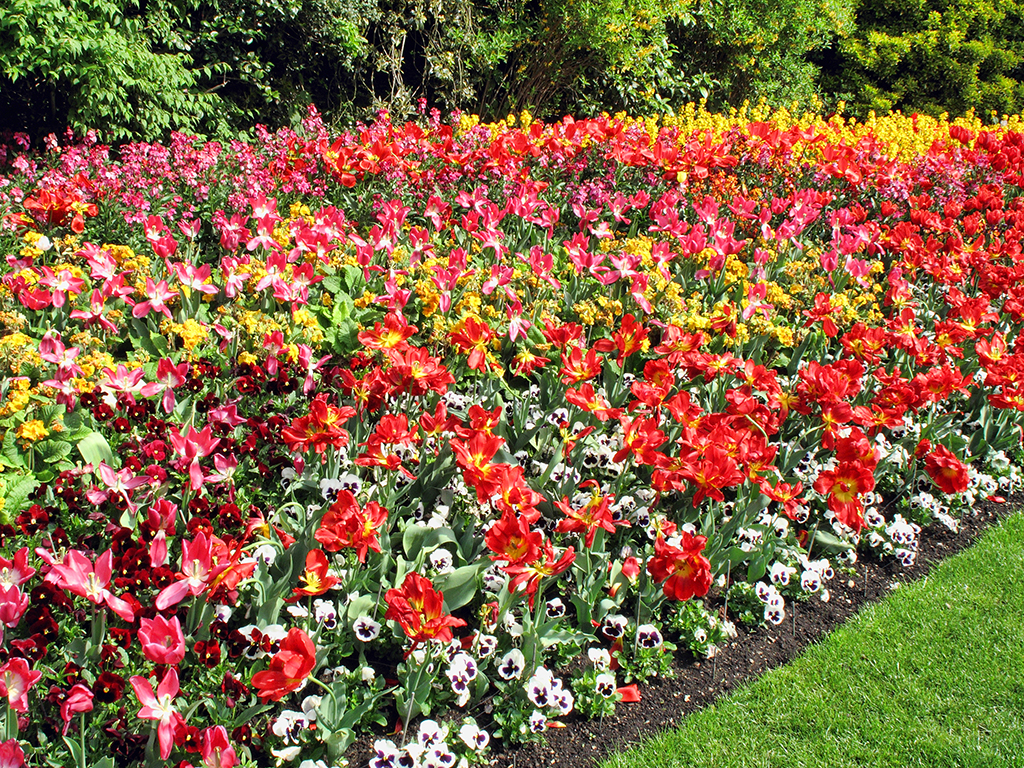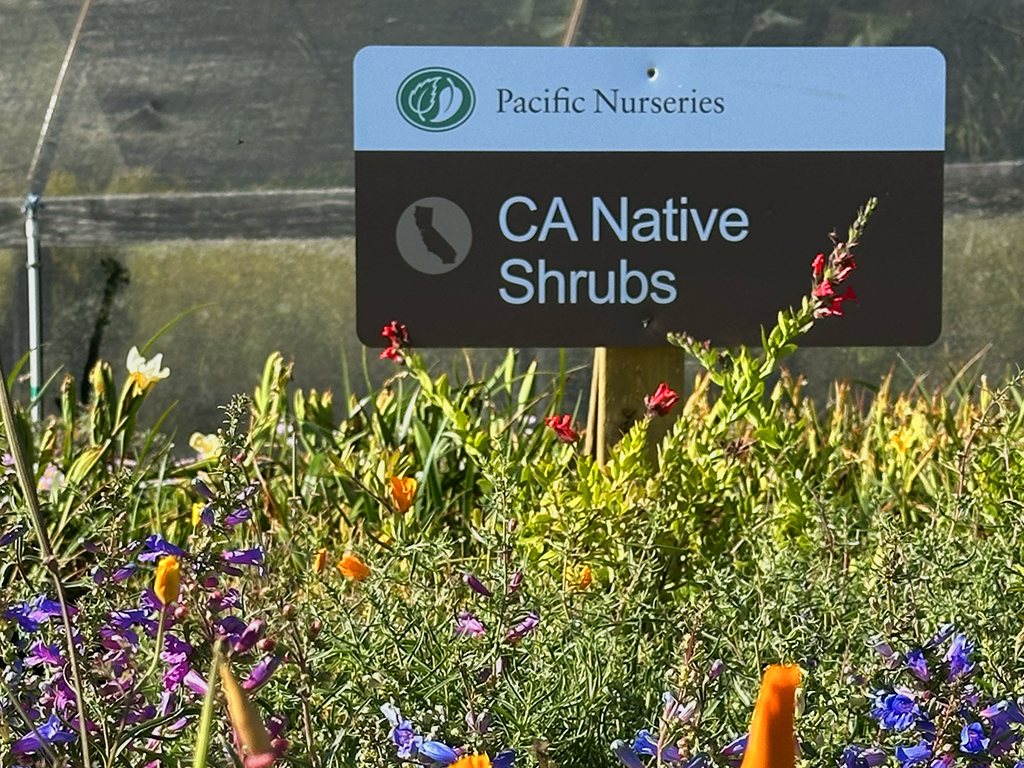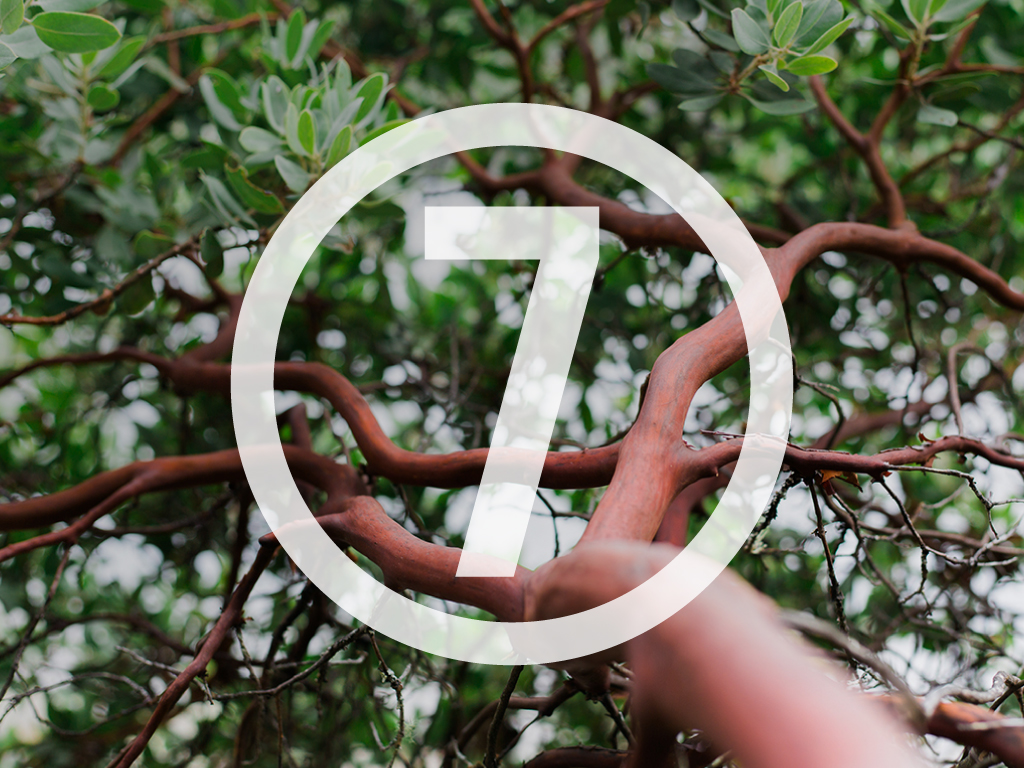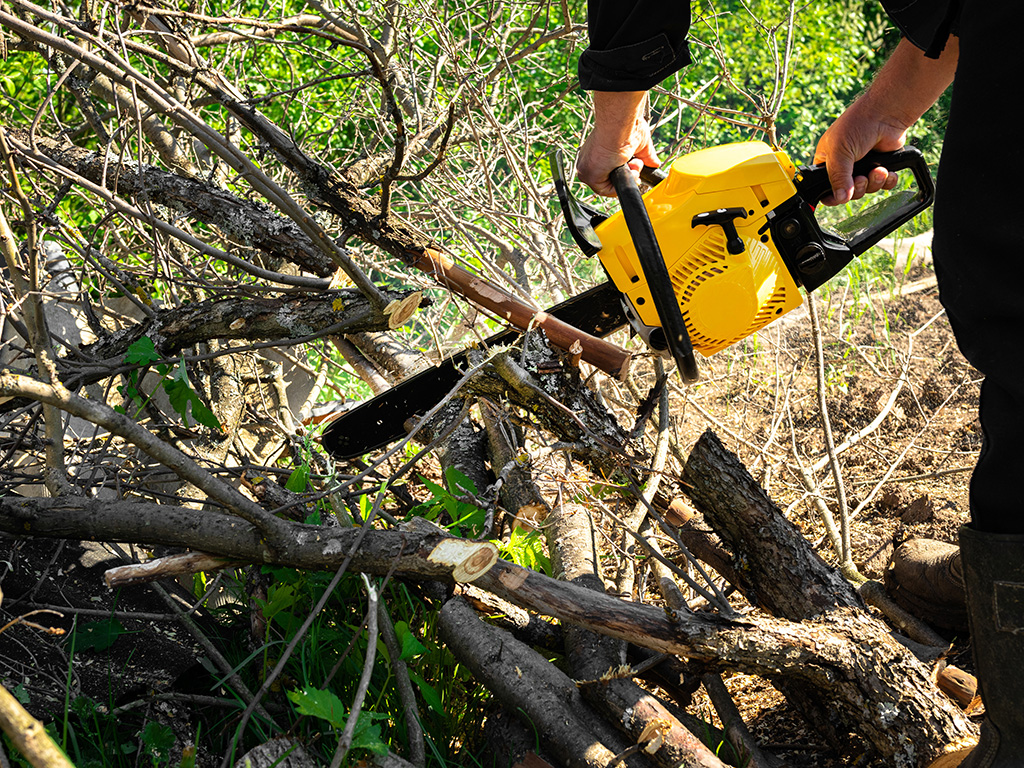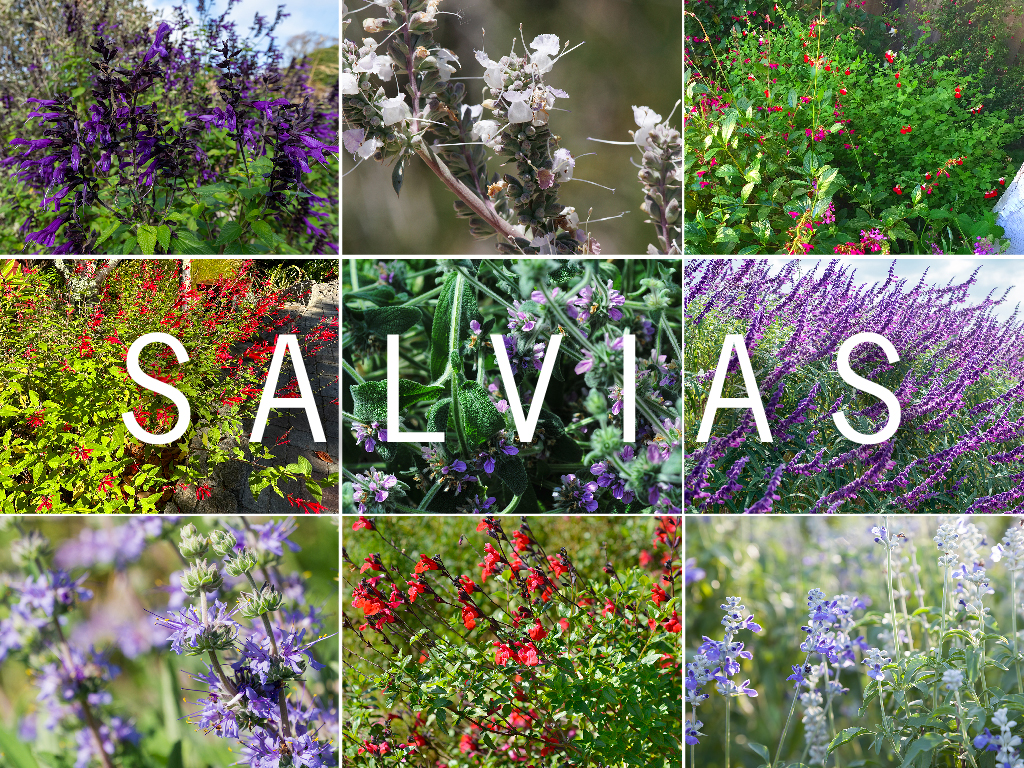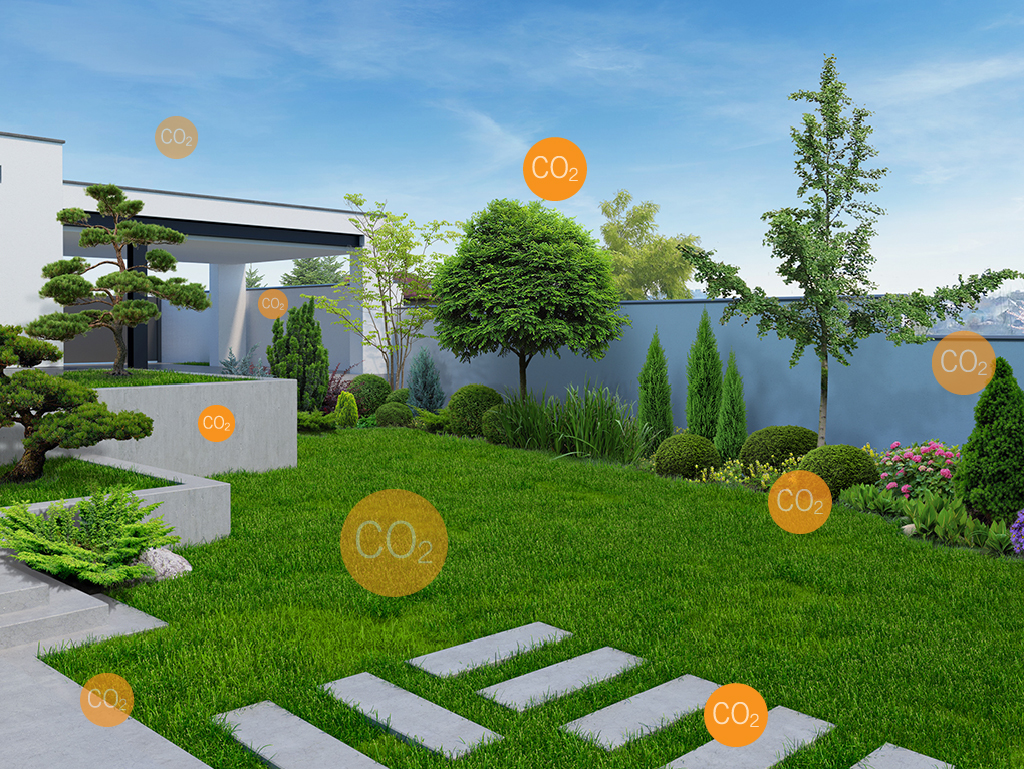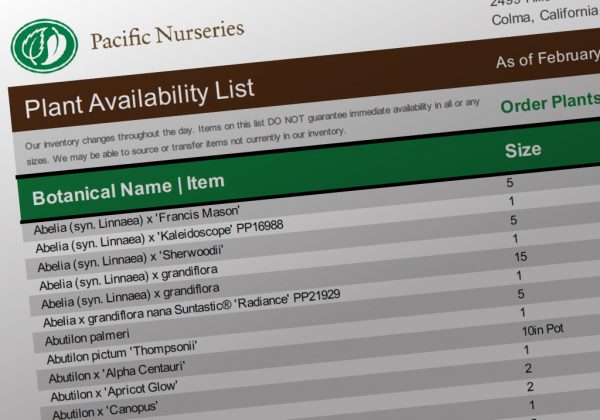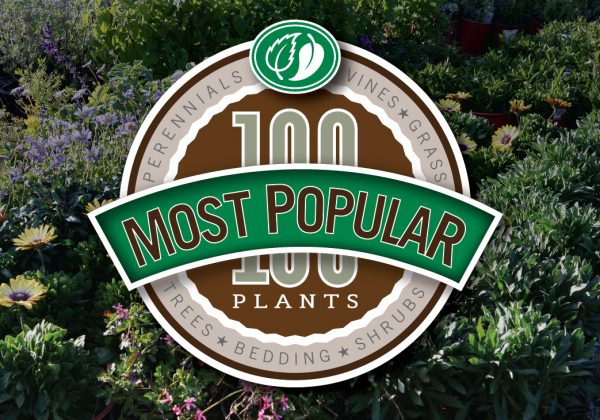Now that spring has arrived in the Bay Area, clients are asking Landscape Pros for help in brightening up their gardens, planters, and growing areas with vivid, colorful Bedding Plants.
What are Bedding Plants?
Bedding Plants are a unique group of plants that serve many important functions for Bay Area Landscape Professionals. They can also be part of a satisfied client relationship.Most of these plants have a dwarf habit and reliably provide an abundant and uniform display of intense, colorful flowers. They are grown primarily for use in large-scale areas where consistency, predictability, and seasonal color are desired.
Specimens that are classified as Bedding Plants are usually annuals, biennials, and some delicate perennials. Most Bedding Plants are grown in high quantities in 4″ containers or mud flats for easy transport and installation in large groups.
Beautiful Bedding Plant benefits
For flower gardens, hanging baskets, window boxes, and many other outdoor planting areas that demand attention with lots of color, texture, and small scale, Bedding Plants are often the solution that Landscape Pros can turn to with confidence.This group of plants make ideal candidates for eye-level viewing in raised planters or positioned in the front of a border with taller specimens with contrasting leaf sizes in the background.
Bedding Plants can also be important additions when completing a new garden installation or helping clients with a seasonal garden tune-up. Jason Fuller, the bedding specialist at Pacific Nurseries, likes to describe bedding plants as the “icing on the cake” to a beautiful garden.
Landscape Pros should consider adding Bedding Plants to their project because they offer so many benefits including:
- | High concentration of bright color
- | Small plant size
- | Optimized for massing in large groups
- | Great for a focused color palette
- | Demonstrates seasonal change with specimen variety
- | Can include herbs + edible plants
“Our client’s frequently compliment us on the different varieties of Bedding Plants that we introduce into their gardens throughout the year.”
T. Michael Moore | Masterpiece Gardens
T. Michael Moore | Masterpiece Gardens
How to pick the right Bedding Plants
Choosing the right bedding plants requires a thoughtful evaluation of the installation location and planting fundamentals including:- | Mature plant height | Best for >2′ tall locations
- | Wind exposure | Excessive movement can affect growth + development
- | Salt air | Air-borne salt absorbed through foliage + root system can damage and reduced growth
- | Proper soil preparation | Addition of amendments + fertilizer ensures bloom frequency
- | Water frequency | Daily watering required—especially during summer
Bedding Plants usually have delicate structures and flowers. As a result, they thrive in rich, well-draining soil and usually require generous amounts of amendments or soil conditioners.
These additions nourish the plants and enhance the frequency and volume of blooms. Bedding Plants will also appreciate the consistent and regular application of organic fertilizer and water.
4 steps to use Bedding Plants successfully
Before you select Bedding Plants for your project, get clear on your requirements and chart a course to a successful installation with these 4-steps.1 | Make a Design Plan
If you fail to set your objectives and goals for your bedding area, you’ll likely be disappointed—and so will your client.
Take the time to carefully consider, and document the attributes of your bedding location that we outlined above. Then select specimens and companion plants that complement one another with color, form, height, and texture.
It’s also important to factor in the surrounding landscape, grades, drainage, and how the bedding area will enhance the existing environment features or structures.
2 | Calculate plant quantity + spacing
The best way to determine the number of plants that you need for a bedding area is to multiply the square footage of the planting bed by the plants needed per square foot. And if you’re using plants with different spacing requirements in the same area, estimate the square footage you will need for each plant.3 | Limit your color palette
One of the easiest and most successful bedding plant color plans is a monochromatic color scheme. While this can sound uninspiring, this is a very effective solution that combines shades of a single color to make an impactful statement in a landscape. It also doesn’t appear to be chaotic or unstructured.You can also develop your own color palette that will meet your requirements and the personal preference of your client.
4 | Choose quality plants from a reliable source
From a few items to an entire installation, find the exact Bedding Plants that you’re looking for by turning to a seasoned grower with large, on-hand inventory or a plant broker with an extensive network of proven plant providers.
“Adding Bedding Plants can be the “icing on the cake” for a beautiful garden that your clients will love.”
Jason Fuller | Pacific Nurseries
Jason Fuller | Pacific Nurseries
10 great Bedding Plants for the Bay Area
With the help from some experienced Bay Area Landscape Pros that frequently use large volumes of seasonal Bedding Plants, we’ve assembled a group of plants that they find particularly attractive.Check them out below and consider adding these colorful beauties to your next project.
Bacopa monnieri
Common name | Water hyssop
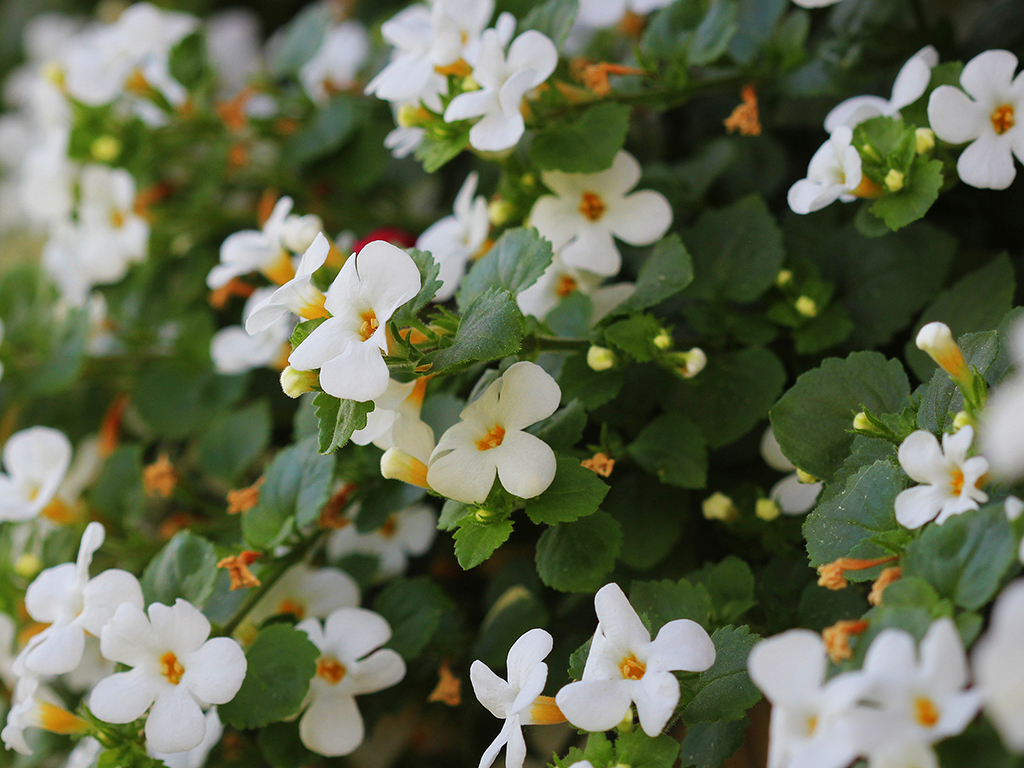
Bacopa is a non-aromatic herb with small, white or violet flowers that have four to five petals. The leaves of this plant are succulent-like, oblong, and arranged opposite the flowers on the stems. This hardy plant can grow in slightly brackish conditions where seawater and clear water are mixed. Bacopa will bloom from spring until fall and in mild winters, it can flower year-round. Best of all, it’s easy to propagate with cuttings from the ends of the plant. The variety MegaCopa features large, soft violet flowers that are heat tolerant.
Impatiens walleriana
Common name | Touch-me-not
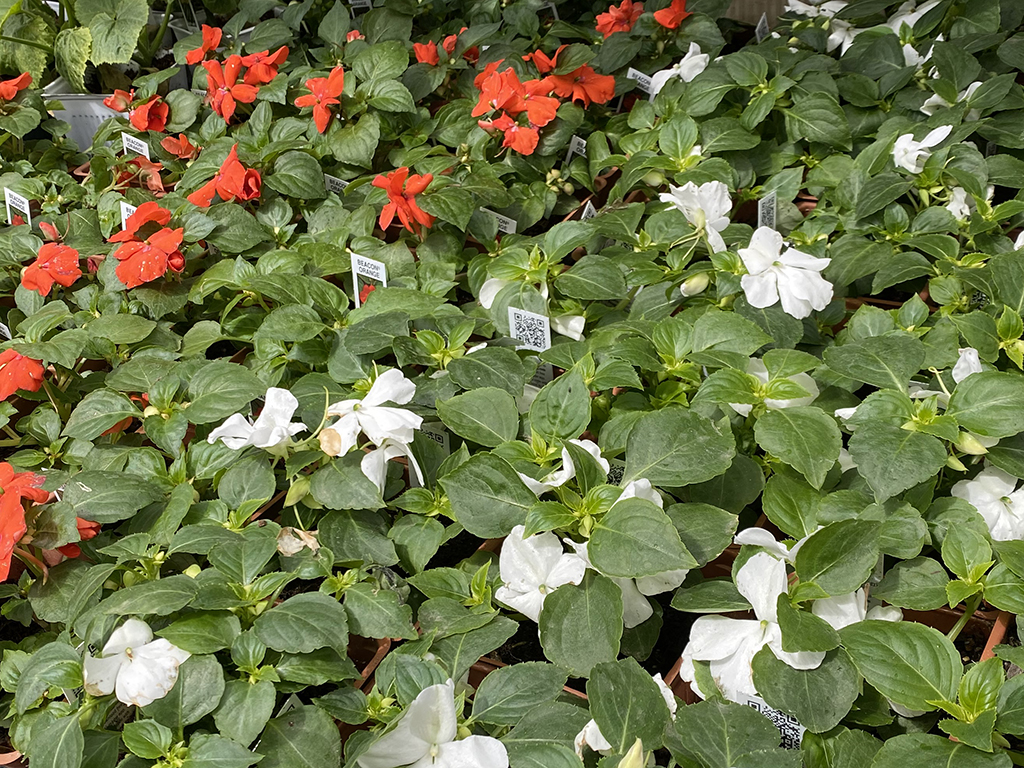
Impatiens are the most popular annual bedding plant in the U.S. They feature simple leaves alternately arranged along the stem and profuse purple, yellow, pink, red, or white flowers. The sought-after, amazingly bright flowers are irregularly shaped and can be solitary or appear in small clusters. The result is a dramatic, consistent color display when they are planted in large groups. They can grow to 3′ in height but usually reach less than that. Impatiens perform best in moist, well-drained soil and in partial shade.
Petunia x hybrids
Common name | Petunia
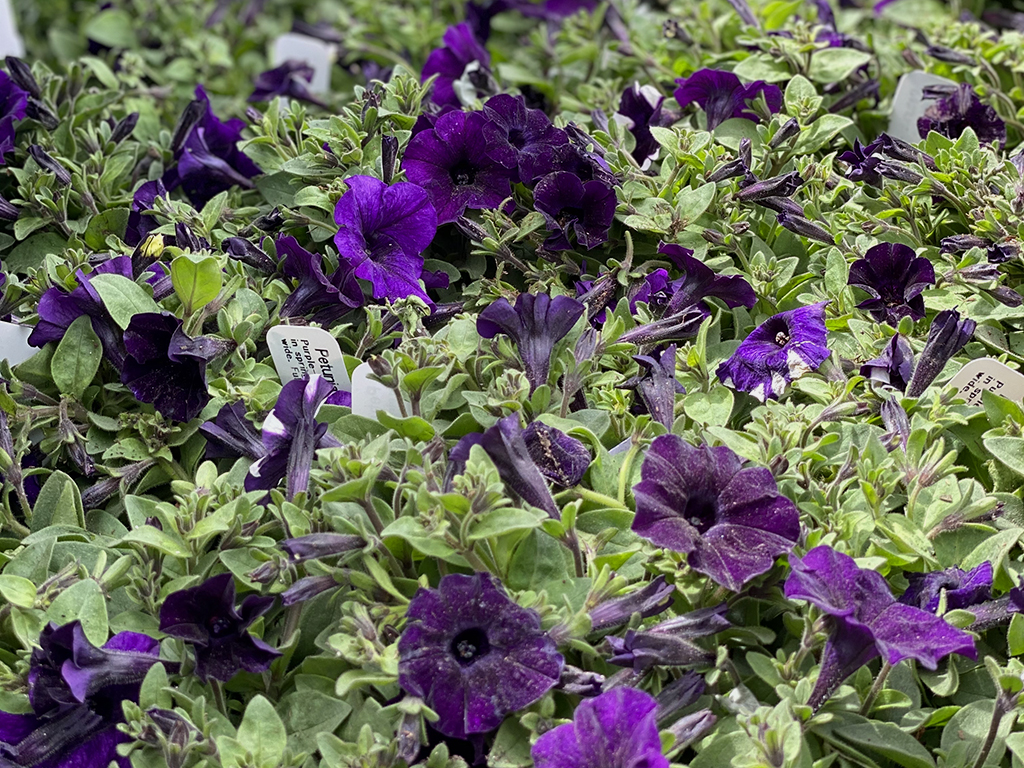
Petunia x hybrids are extremely popular Bedding Plants that are available in a wide range of colors including pink, purple, red, and white. As a delicate, thin-leaved tropical plant originating from South America, the colorful Petunia blossoms are short-lived and can die off quickly. The result is they require frequent deadheading to extend bloom time and maintain a tidy appearance. By reducing branch length by about 25%, Petunias will regenerate and re-bloom for a long-lived Bedding Plant display of color.
Ranunculus
Common name | Buttercups
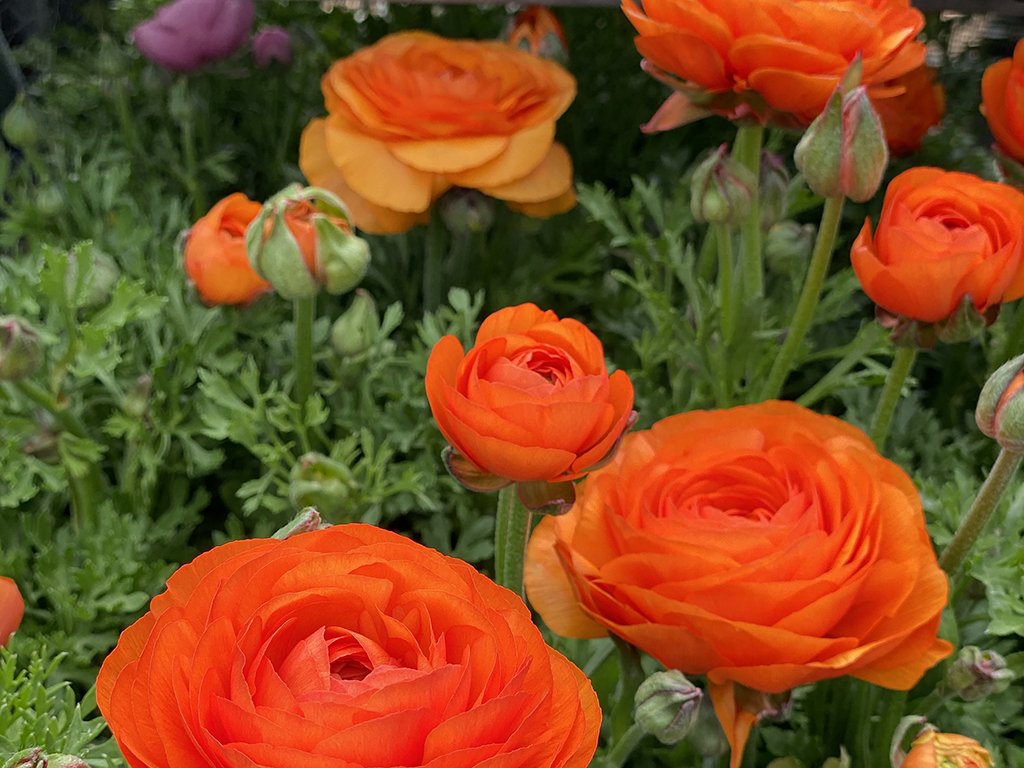
Ranunculus are popular ornamental flowers that Bay Area Landscape Pros and their clients love for their large and brightly colored, red, orange, yellow, pink, and white flowers. These Bedding Plant staples feature tough roots and can be regarded as weeds by some Landscape Pros and gardeners. Ranunculus usually flower in the spring and they can continue blooming throughout the summer season in the right areas. They prefer sandy or loamy soil that has good drainage and slightly acidic soil.
Lobelia erinus
Common name | Lobelia
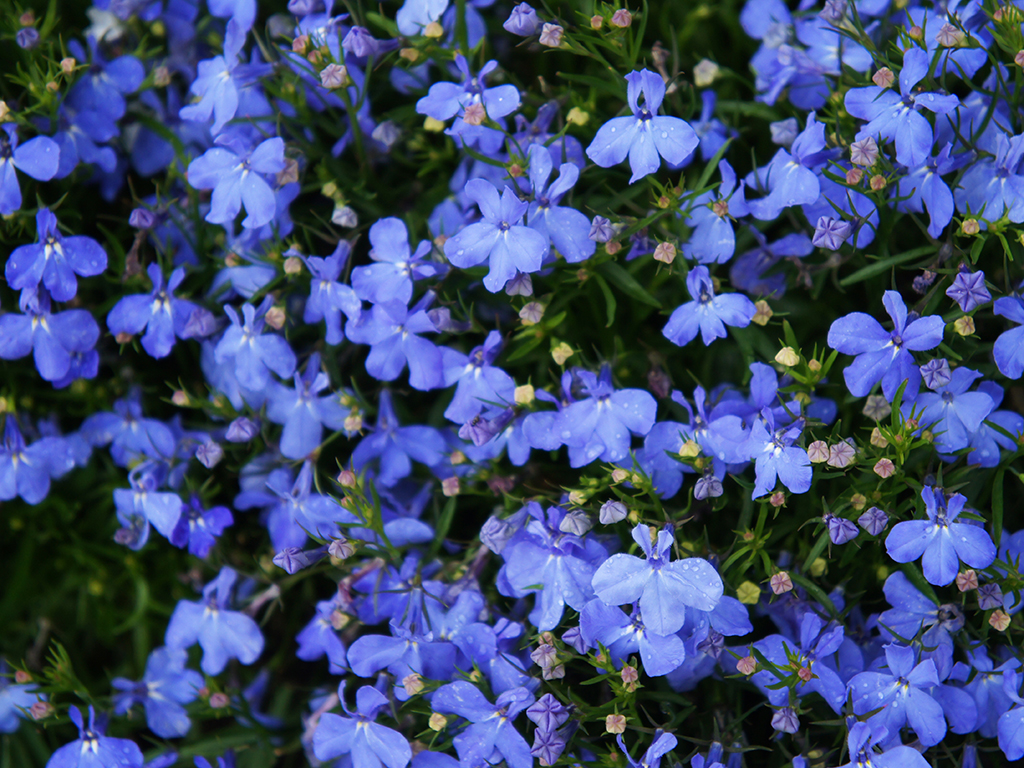
Lobelia erinus is a low-growing, scrambling herbaceous perennial plant. It has oval, toothed leaves and it features blue to deep violet-colored flowers that appear in spring and last thru summer. The small flowers have five lobes and a center crown that can be yellow or white. It does best in cooler areas of the garden that are not too hot or dry. This is an extremely popular bedding plant because of the abundant volume of flowers and the intense, deep, flower color. It’s very easy to grow, attracts butterflies and it’s deer-resistant.
Tagetes spp.
Common name | Marigold
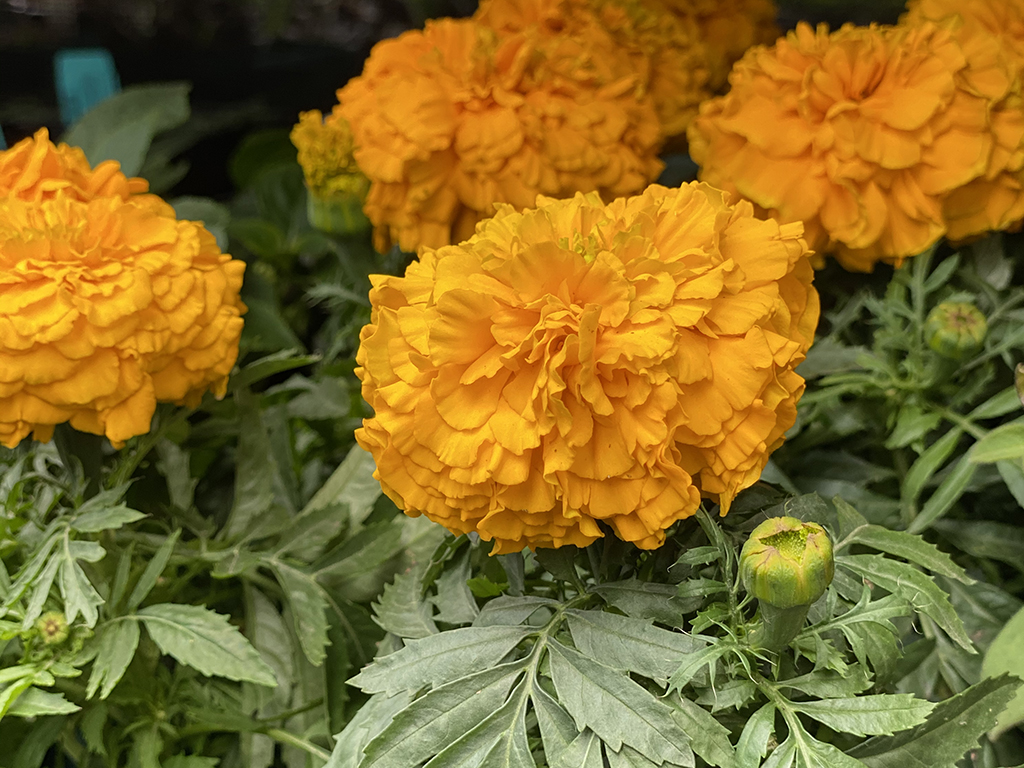
Tagetes spp. are great bedding plants that feature strong-scented leaves and brilliant yellow, orange, or red flowers that usually appear on a solitary stem. They are very easy to grow and thrive in full sun. Interestingly, marigolds perform better and bloom more often in soil that is not too rich or too wet.
Cylamen persicum
Common name | Alpine violet
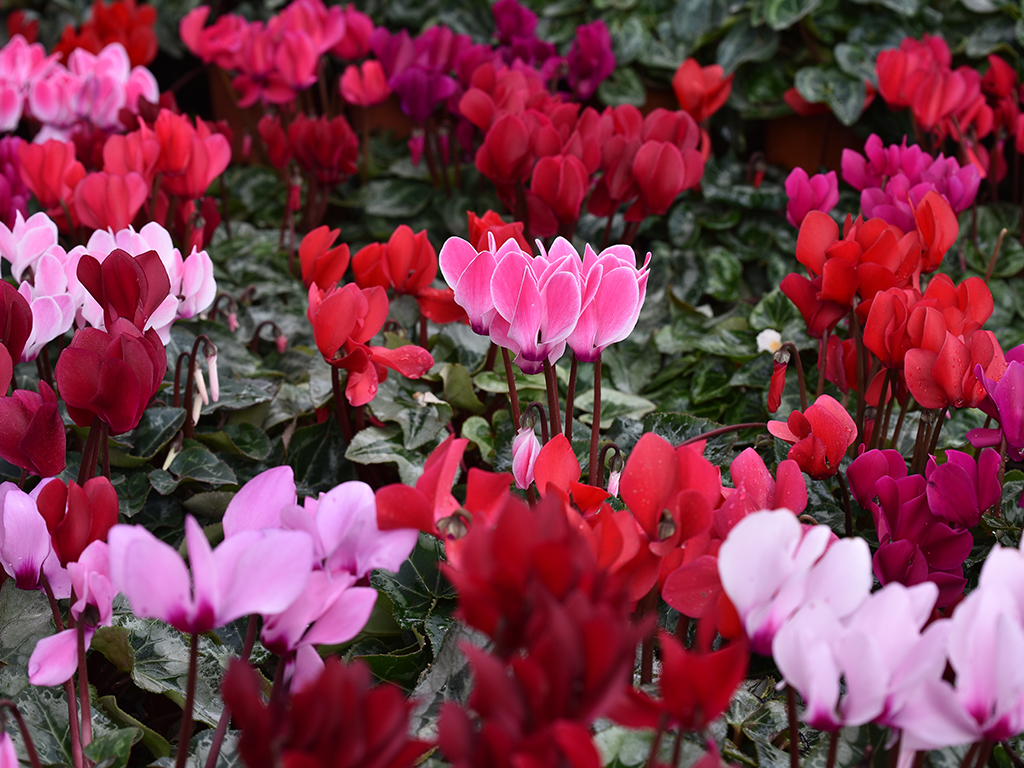
Cylamen persicum is a great seasonal choice for bedding plants that can be rotated and planted in the cooler fall months of the year. Leaves appear in autumn and through the winter and then die back in spring as the plant goes dormant through the hot, dry summer season. Cyclamens flower on a stem coming from a growing point on a tuber which supports leaves, flowers, and the root system. Flowers have five petals and display soft white, pink, or purple colors that intensify on the interior of each flower. Cyclamens prefer partial shade and need protection from hot afternoon sun. They are somewhat water-efficient and need only enough water to keep from completely drying out.
Begonia semperflorens
Common name | Wax Begonia
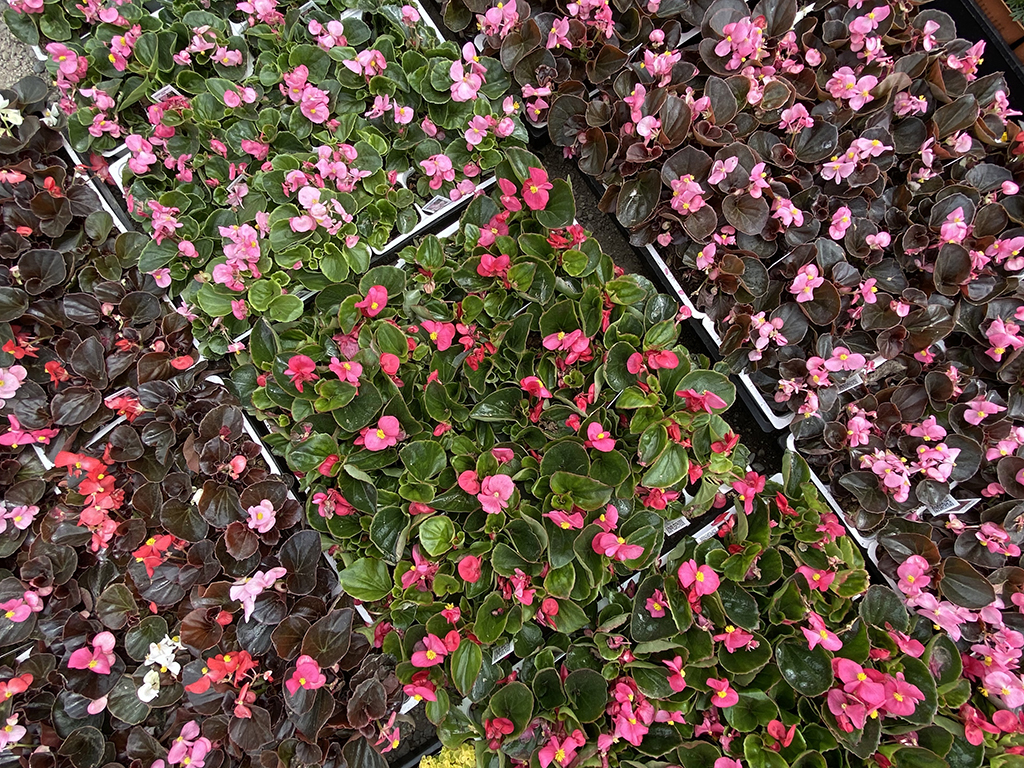
Begonia semperflorens is a tender, herbaceous perennial that’s succulent-like and grows in a compact, mounded form. This hard-working Bedding Plant also produces an abundance of vibrant flowers in a color palette that includes pink, red, rose, and white. As a fibrous-rooted plant with fleshy stems and green to bronze leaves, it does best in full sun. And if you provide it with plenty of mulch in the summer to protect roots and add frequent water, it will bloom into late summer. Best of all, this hardy Bedding Plant is unattractive to deer and can tolerate both high heat and heavy shade.
Papaver nudicaule
Common name | Iceland poppy
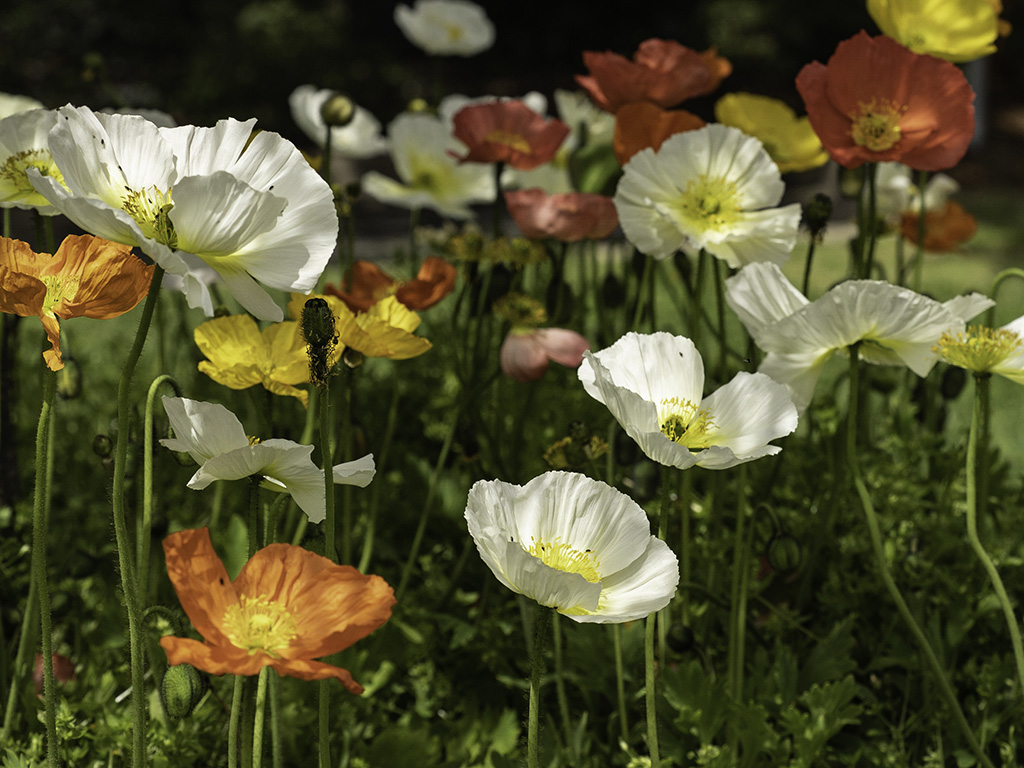
Papaver nudicaule is a flowering perennial plant that thrives as an annual in the warmer climates of the Bay Area. They feature tall leafless stems that sport brilliantly colored flowers with thin, silky petals. Iceland poppies come in a range of colors from red to pink, orange, yellow, and even white. Like most annual Bedding Plants, they prefer full sun and well-drained soil.
Viola tricolor hortensis
Common name | Pansy
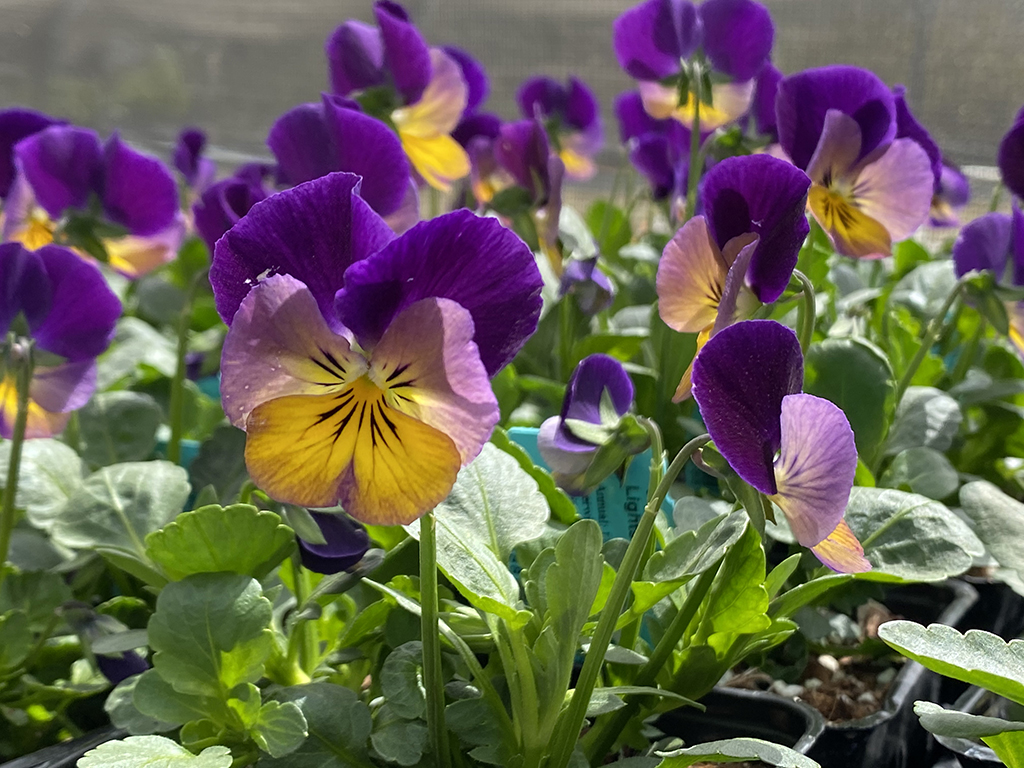
As one of the most popular Bedding Plants in the Bay Area, Pansies feature large flowers that come in a wide variety of colors including blue, purple, red, rose, yellow, apricot, brown-red, white and even bi-colors. Some varieties have contrasting central colors and markings that make a dramatic statement in large areas. The flower structure has two slightly overlapping upper petals, two side petals, and a single bottom petal with a slight beard emanating from the center of the flower. Like most Bedding Plants, Pansies prefer sun and well-draining soils.
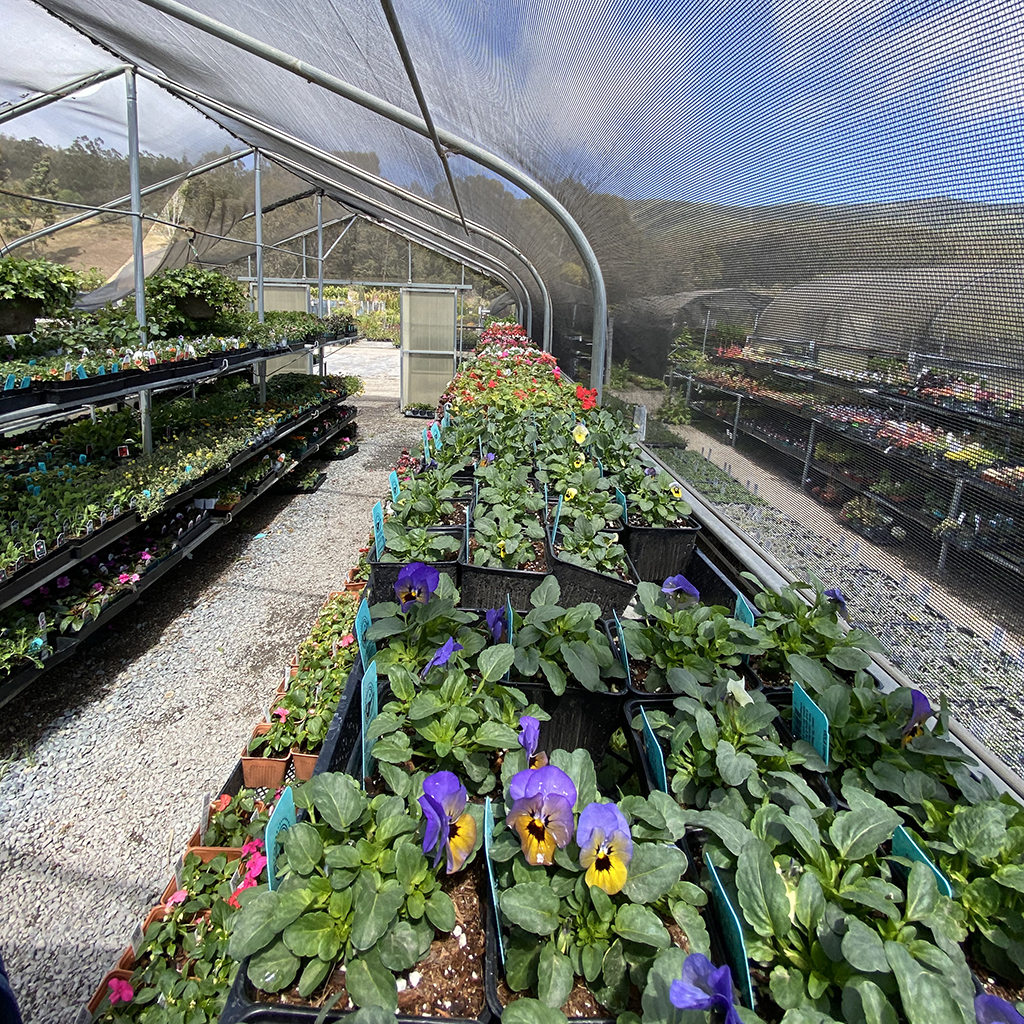
Need help with Bedding Plants?
If you want to learn more about selecting Bedding Plants and availability, contact one of our experts at Pacific Nurseries—like Jason Fuller. As both a grower and a plant broker, we’re ready to work with you to provide just the right Bedding Plants that will make your project a success with your clients. It’s one of the many qualities that make us different from just an ordinary nursery.Contact us online or just give us a call at 650.755.2330.
We can also provide an Estimate for one item or for an entire installation. Just attach your Microsoft Excel .xlsx plant list to our convenient online estimate form.
As the Founder of Pacific Nurseries, Don Baldocchi gets satisfaction from knowing the Bay Area is greener and more beautiful by helping landscape professionals succeed. Email Don or give him a call at 650.755.2330.

